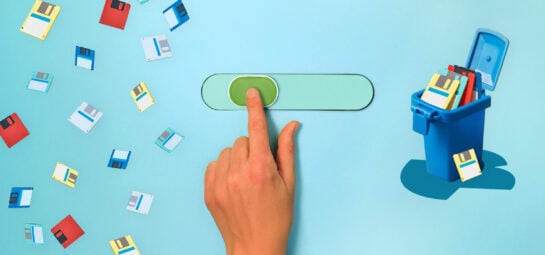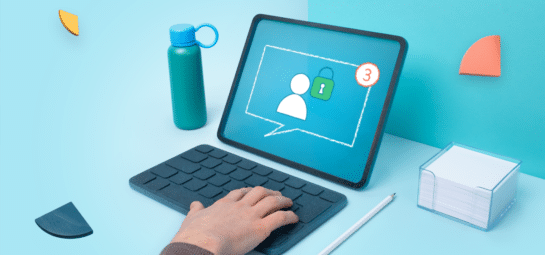5 tips for a successful migration to TOPdesk Asset Management

We’ve said it before, and we’ll say it again: migrating from Configuration Management to Asset Management can be a hefty process. Like any other change, it requires effort, time and adjusting. Not to mention that in the meantime you still have a business to run. But the latest developments and added benefits to TOPdesk Asset Management do make the switch all that more worth it.
So, how do you go through this process as successfully as possible, while also making sure the migration offers a smooth transition for both your IT department and the rest of your colleagues? There’s no straightforward answer to this question, but we’ve compiled a list of our top 5 tips to help your organization start out with TOPdesk Asset Management in the best way you can. Read up below to learn more.
1. Do an asset impact analysis
Knowledge is key whenever starting out with any type of change. Migrating to Asset Management is no exception to this rule. If you’ve used Configuration Management for some years, there are bound to be certain valuables that you simply don’t want to or need to migrate. And so, we advise you to start out with some housekeeping. Do an analysis of the current valuables in Configuration Management, so that you’re aware of which elements are important for you to migrate, and which ones not so much. There might be assets you’ve registered long ago, the license rights of which you might not have anymore. Or perhaps there’s valuables lurking in the corners of your IT ecosystem that nobody has any need of anymore.
Whatever your individual case might be, get started with preparing an overview of the current state of your assets and the dependencies between them and other systems you’re using. Not only will this give you insight and confidence about the migration process, but it will essentially make sure that you will be aware of the scale of the change that you will be implementing.
2. Get a test environment
Pre-migration testing is, we dare say, just as important as the real deal. A migration from Configuration Management to Asset Management can be a significant change for your organization. And so, in order to ensure a successful and carefree process, we urge you to perform the migration in your up-to-date test environment first. It can be key to avoiding migration failure, identifying potential problems early on, and properly managing the impact the migration will have on your organization. Among the many benefits, having a test run can also be the moment to clean up your asset templates: remove fields and/or widgets that you’re not using, name your field widgets and reorder fields if necessary.
Don’t have a test environment? Contact your Customer Success Manager to discuss what your best options are.
3. Allocate ample time and prepare to put in the effort
With the risk of repeating ourselves—migration will require time and effort. While this is something that’s crystal clear by now, it’s a different thing to properly allocate the necessary time and effort for a successful transition.
What does this look like? Well, it’s good to mention that migration time will vary greatly from one organization to the other based on factors, such as company size or the amount of asset types and departments working with the system. Regardless of your individual context, however, we would advise you to give yourself and your company enough time to accommodate space for mistakes—it’s almost inevitable something will go wrong, and that’s OK—and to allow for a process that prioritizes precision rather than speed.
Preparing to put in the effort is just as important. What this means is fully understanding the scope of a migration. This in turn will allow you to identify the skills you and your colleagues will need to successfully complete the process and to properly allocate the necessary tasks.
4. Prepare your organization and colleagues
After you’ve finished your pre-migration testing and before you start planning the actual transition production, it’s a good time to make sure that your colleagues are fully aware of the change that’s about to happen. In the end, working in Asset Management is a collective endeavour, and so you want everyone involved to be as knowledgeable as they can be.
Based on the level of involvement, you may organize a training or share a video, manual, work instruction or quick reference card. In determining the approach, think of how people will use the new system: do they only need to link assets to a call and occasionally view its information? Or do they need to create custom overviews, create new assets or manage the stock room?
5. The final steps before going live
You’re almost there! Once the previous steps have been taken, we expect these last stages to be the smoothest and easiest ones. Some final steps would be to:
- Create a backup—better safe than sorry, so make sure you backup your TOPdesk database before you perform the migration in your production environment.
- Perform the actual migration of object types as performed during the test migration.
- Make sure your asset templates are cleared of unused functionality and that they are also logically grouped.
- Set up replacing functionality—using the test environment as your reference, set up actions, overviews, reports or imports that are required for your processes.
At last, you’re all set up and ready to go! And the most exciting part is yet to come: with Asset Management, the possibilities for making your work better, and your colleagues’ lives easier, are practically endless. The system’s combined flexibility and options for automation also means that you can be creative with your process improvement. Not to mention that we’re continuously working on new features, so make sure to stay in the loop for the latest functionalities either via our Product Newsletter.
Inspire others, share this blog



